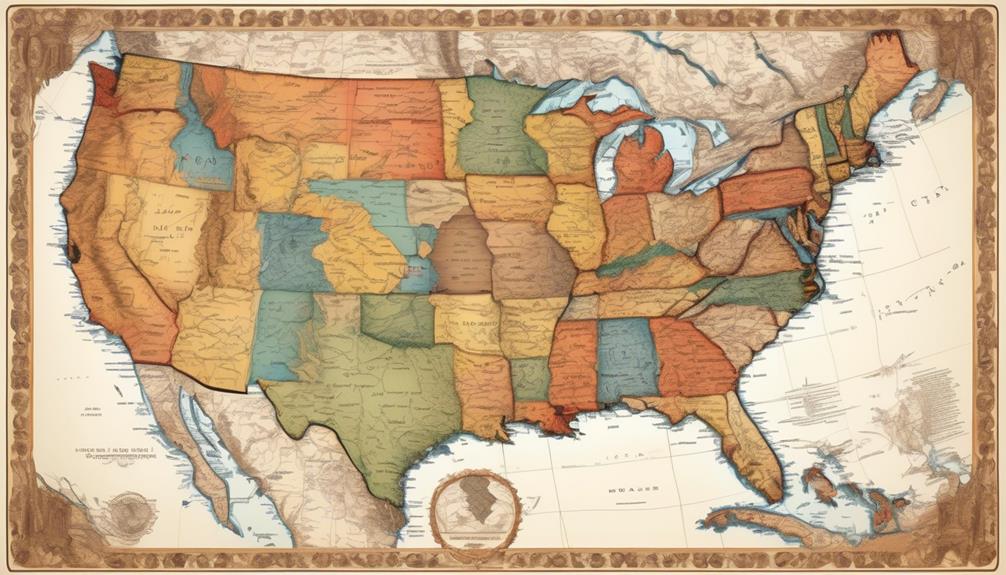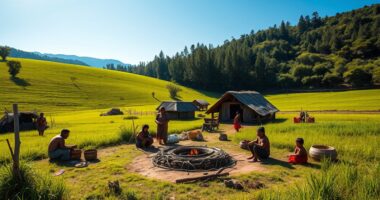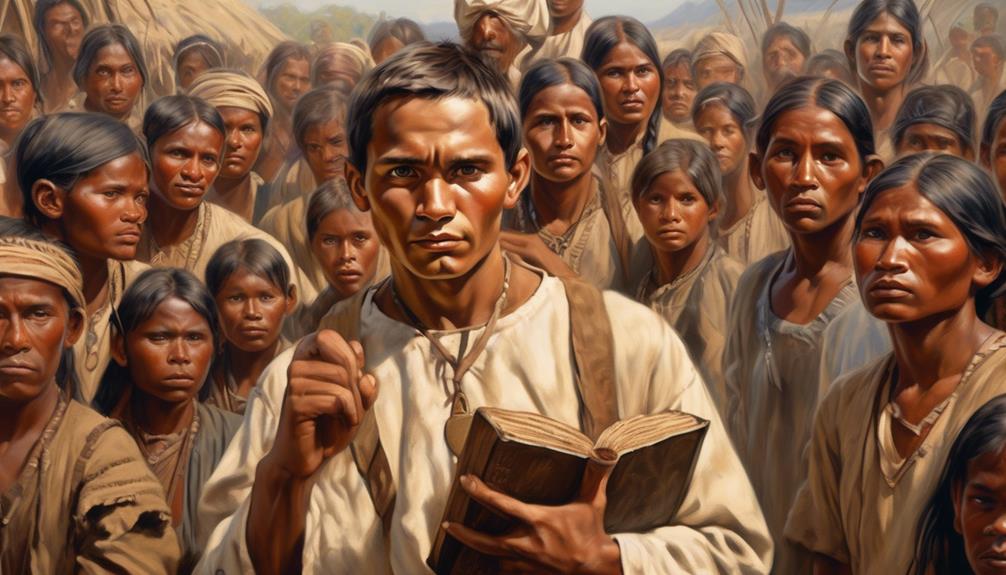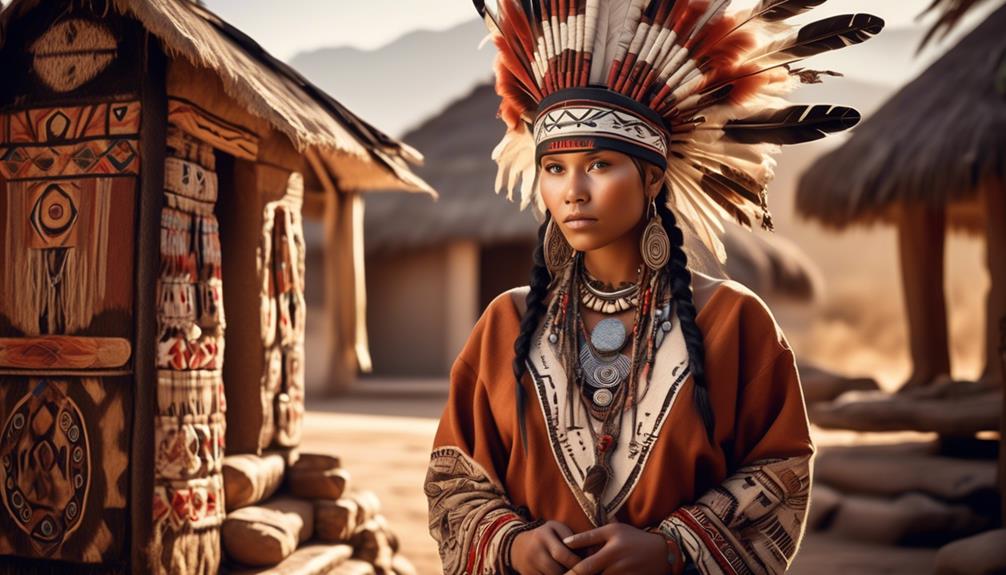Did you ever stop to think about how many indigenous languages are spoken in Mexico?
The linguistic diversity in Mexico is often underestimated, and the true extent of indigenous languages spoken in the country may surprise many.
As we explore this topic, we will uncover the rich tapestry of indigenous languages that contribute to Mexico's cultural heritage and identity, shedding light on the complexities of language preservation and the impact of these languages on Mexican society.
Key Takeaways
- Mexico is home to over 68 officially recognized Indigenous languages, highlighting the incredible linguistic diversity in the country.
- These languages are spoken by millions of people and play a vital role in preserving cultural identity and ancestral knowledge.
- The origins of these languages can be traced back to the pre-Columbian era and have been influenced by various ancient cultures such as the Olmecs, Mayans, and Aztecs.
- Efforts to preserve and revitalize Indigenous languages in Mexico include community-led initiatives, bilingual education programs, and the use of digital resources and technology for wider accessibility.
Historical Origins of Indigenous Languages in Mexico
Indigenous languages in Mexico have a rich and complex historical origin, reflecting the diverse cultural and linguistic heritage of the Indigenous peoples in the region. The origins of these languages are deeply rooted in the pre-Columbian era, influenced by the civilizations of the Olmecs, Mayans, Aztecs, and other ancient cultures. These influences have contributed to the remarkable language diversity seen in Mexico today.
The linguistic evolution of Indigenous languages in Mexico has been shaped by centuries of interaction, colonization, and assimilation. Spanish colonization, in particular, played a significant role in shaping the modern-day Indigenous languages, leading to the incorporation of Spanish vocabulary and grammatical structures. This historical influence has resulted in a unique fusion of Indigenous and Spanish elements within the languages spoken by Indigenous communities.
Comparatively, the origins and influences on Indigenous languages in Mexico highlight the resilience and adaptability of these linguistic traditions. Despite the pressures of colonization and globalization, these languages have persevered, maintaining their distinctiveness while also integrating external influences.
Understanding the historical origins and influences on these languages provides valuable insights into the cultural tapestry of Mexico and the richness of its Indigenous linguistic heritage.
Current Status of Indigenous Languages in Mexico

The status of Indigenous languages in Mexico reflects a complex interplay of preservation efforts and the challenges posed by modernization and globalization. As the world around them changes, Indigenous languages face the risk of being marginalized or even lost. However, there are ongoing revitalization efforts and linguistic preservation initiatives that offer hope for the future of these languages.
- Government Support: The Mexican government has taken steps to recognize and promote Indigenous languages, such as incorporating them into official documents and providing funding for language preservation programs.
- Community Initiatives: Indigenous communities themselves are actively involved in language revitalization efforts, organizing language classes, cultural events, and intergenerational language transmission programs.
- Challenges of Globalization: Modernization and globalization present significant challenges to the preservation of Indigenous languages, as younger generations are often more inclined to use dominant languages in education and daily life.
While the current status of Indigenous languages in Mexico is indeed precarious, the combined efforts of governmental support and community-driven initiatives provide a glimmer of hope for the continued vibrancy of these linguistic treasures.
Diversity of Indigenous Languages in Mexico
Mexico is home to an extraordinary array of diverse Indigenous languages, each representing a unique cultural and linguistic heritage. The linguistic landscape of Mexico is incredibly rich, with over 68 Indigenous languages officially recognized and many more dialects within those languages. These languages are spoken by millions of people across the country, and they play a vital role in preserving the cultural identity of Indigenous communities. The significance of these languages extends beyond mere communication; they are the vessels through which traditions, folklore, and ancestral knowledge are passed down through generations. The diversity of Indigenous languages in Mexico reflects the country's complex history and the resilience of Indigenous communities in the face of adversity.
| Indigenous Language | Number of Speakers |
|---|---|
| Nahuatl | 1.5 million |
| Maya | 1.2 million |
| Mixtec | 511,000 |
This table provides a glimpse into the linguistic richness of Mexico, underscoring the need for language preservation efforts to safeguard the cultural significance embedded within these diverse Indigenous languages.
Efforts to Preserve and Revitalize Indigenous Languages

Efforts to Preserve and Revitalize Indigenous Languages in Mexico underscore the urgent need to safeguard the cultural significance embedded within the diverse linguistic landscape of the country. Language revitalization programs have been initiated to address the decline of indigenous languages. These efforts involve:
- Community-Led Initiatives: Many language revitalization projects are spearheaded by indigenous communities themselves. This approach ensures that the preservation of language is rooted in the cultural context and traditions of the community, making it more effective and sustainable.
- Bilingual Education Programs: Implementing bilingual education systems that incorporate indigenous languages alongside the national language has proven to be instrumental in preserving and revitalizing indigenous languages. These programs not only teach the languages but also instill pride in indigenous heritage among younger generations.
- Digital Resources and Technology: The use of digital tools, such as language learning apps and online resources, has been pivotal in making indigenous languages more accessible to a wider audience, including the younger generation. This has led to increased interest and engagement in learning and preserving these languages.
These efforts underscore the importance of community involvement and empowerment in preserving and revitalizing indigenous languages, ensuring that the rich linguistic heritage of Mexico continues to thrive.
Impact of Indigenous Languages on Mexican Culture
Analyzing the profound influence of indigenous languages on Mexican culture reveals the intricate interplay between linguistic diversity and the formation of societal norms and traditions. The impact of indigenous languages on Mexican culture is profound, shaping various aspects of daily life, from food and clothing to music, art, and spiritual beliefs. Cultural preservation through language is a vital part of Mexican identity, as indigenous languages carry the wisdom, history, and traditions of the country's diverse indigenous communities.
| Aspects of Culture | Influence of Indigenous Languages |
|---|---|
| Food | Recipes, ingredients, and cooking techniques are often passed down through oral traditions in indigenous languages, preserving traditional cuisine. |
| Art | Indigenous languages influence the storytelling, symbolism, and themes in traditional art forms, such as textiles, pottery, and paintings. |
| Music | Many traditional Mexican songs and dances are performed in indigenous languages, preserving ancient musical traditions. |
| Spiritual Beliefs | Indigenous languages are integral to traditional spiritual practices, including ceremonies, rituals, and healing traditions. |
Linguistic diversity in Mexico enriches the cultural tapestry, providing a deep understanding of the country's heritage and fostering a sense of unity and respect for indigenous traditions.
Frequently Asked Questions
What Are the Most Common Challenges Faced by Indigenous Communities in Mexico in Preserving and Revitalizing Their Languages?
Preservation challenges faced by indigenous communities in Mexico are multifaceted, including limited resources, government policies, and intergenerational language transmission.
Revitalization efforts involve community-led language programs, advocacy for language rights, and collaborations with educational institutions.
Comparatively, these challenges vary across different indigenous groups, but the commitment to preserving and revitalizing languages remains strong.
Mastery of these efforts requires understanding the historical, social, and political contexts that shape language preservation and revitalization.
Are There Any Specific Government Policies or Programs in Place to Support the Preservation of Indigenous Languages in Mexico?
Government initiatives in Mexico address indigenous language preservation through various strategies. These include language documentation, revitalization programs, and bilingual education initiatives. The goal of these initiatives is to support the preservation of indigenous languages and promote their use in educational settings. In addition to these efforts, language preservation policies and indigenous language curriculum are also implemented to maintain linguistic diversity. Overall, these initiatives demonstrate a comprehensive approach to safeguarding the rich tapestry of indigenous languages in Mexico.
How Do Indigenous Languages in Mexico Impact the Education System and Access to Education for Indigenous Communities?
The impact of globalization on indigenous languages in Mexico is significant, affecting their preservation and revitalization efforts.
In the education system, indigenous languages play a crucial role in providing access to education for indigenous communities. However, the dominance of Spanish and the influence of global culture pose challenges to the maintenance of these languages.
Efforts to integrate indigenous languages into education can be vital for preserving cultural heritage and promoting linguistic diversity.
What Are Some Lesser-Known Indigenous Languages in Mexico That Are at Risk of Extinction?
Some lesser-known indigenous languages in Mexico that are at risk of extinction include Ayapaneco, Kiliwa, and Chontal.
Language revitalization efforts are crucial for these endangered communities. Without support, these unique languages face the threat of disappearance, taking with them centuries of cultural knowledge and tradition.
Through increased awareness and educational initiatives, we can work towards preserving and celebrating the diversity of indigenous languages in Mexico.
How Do Indigenous Languages in Mexico Differ in Terms of Their Linguistic Roots and Influences From Other Languages?
In terms of linguistic diversity, the indigenous languages in Mexico vary significantly in their roots and influences from other languages.
These variations contribute to the rich tapestry of cultural preservation and language revitalization efforts.
Each language holds unique historical and cultural significance, making it imperative to understand and appreciate the nuances of their differences.
This understanding is crucial for promoting and sustaining the vitality of these indigenous languages in Mexico.
Conclusion
In conclusion, Mexico is home to 68 indigenous languages, each with its own unique cultural and historical significance. These languages play a crucial role in shaping the rich and diverse tapestry of Mexican culture, representing a living connection to the country's indigenous heritage.
Despite facing challenges, efforts to preserve and revitalize indigenous languages are ongoing, highlighting the importance of linguistic diversity in Mexico. With over 7 million speakers of indigenous languages, their impact on Mexican culture is undeniable.









